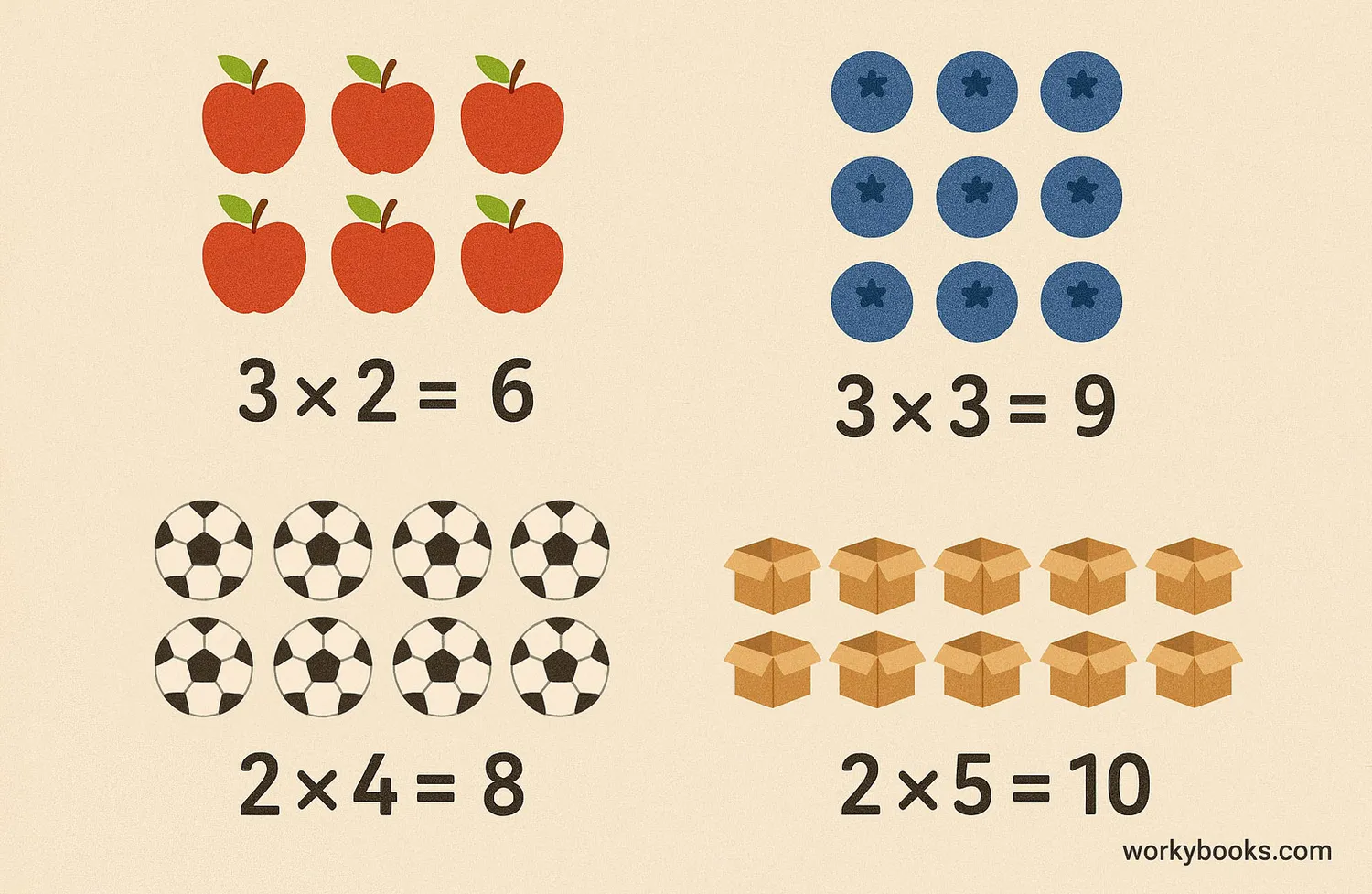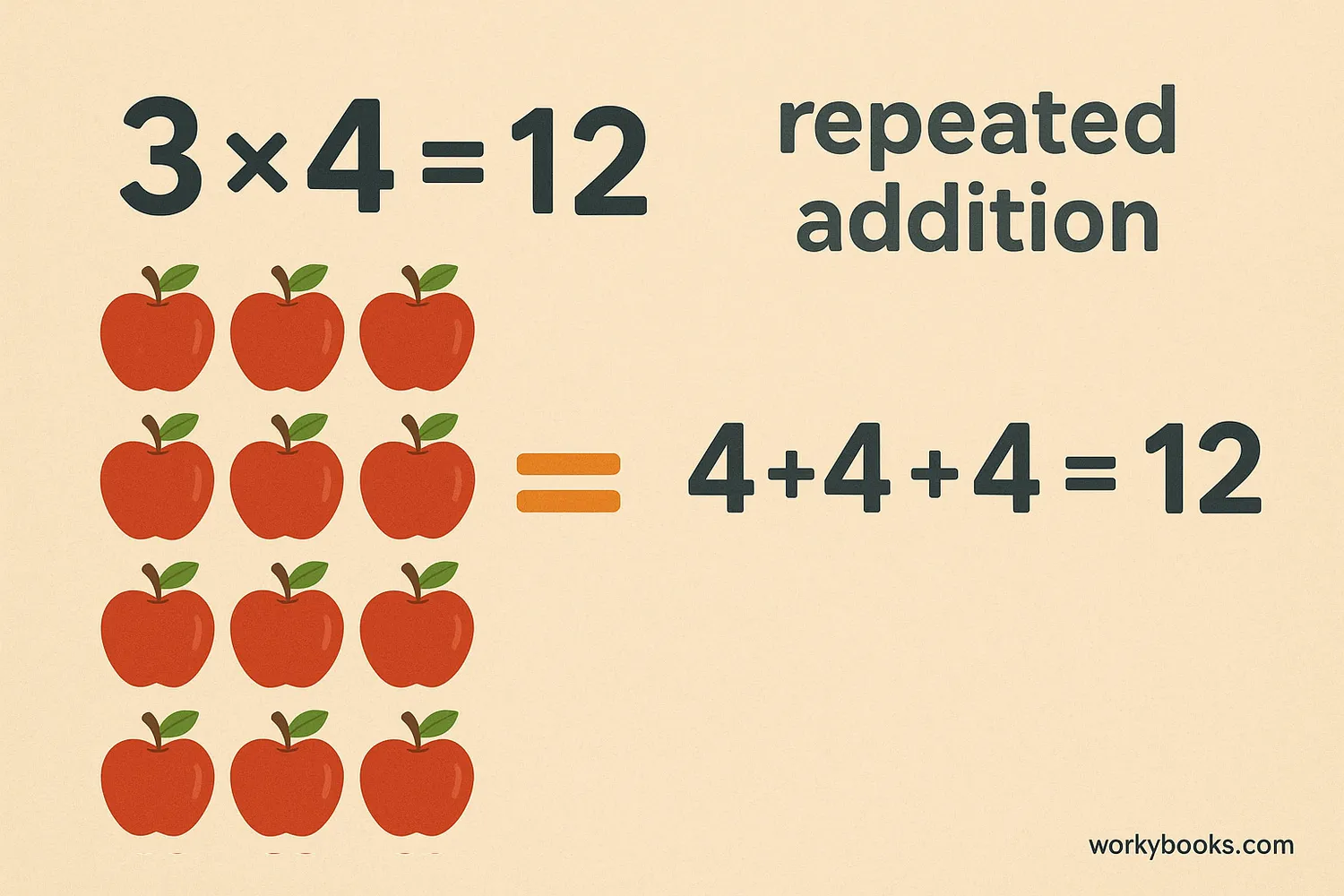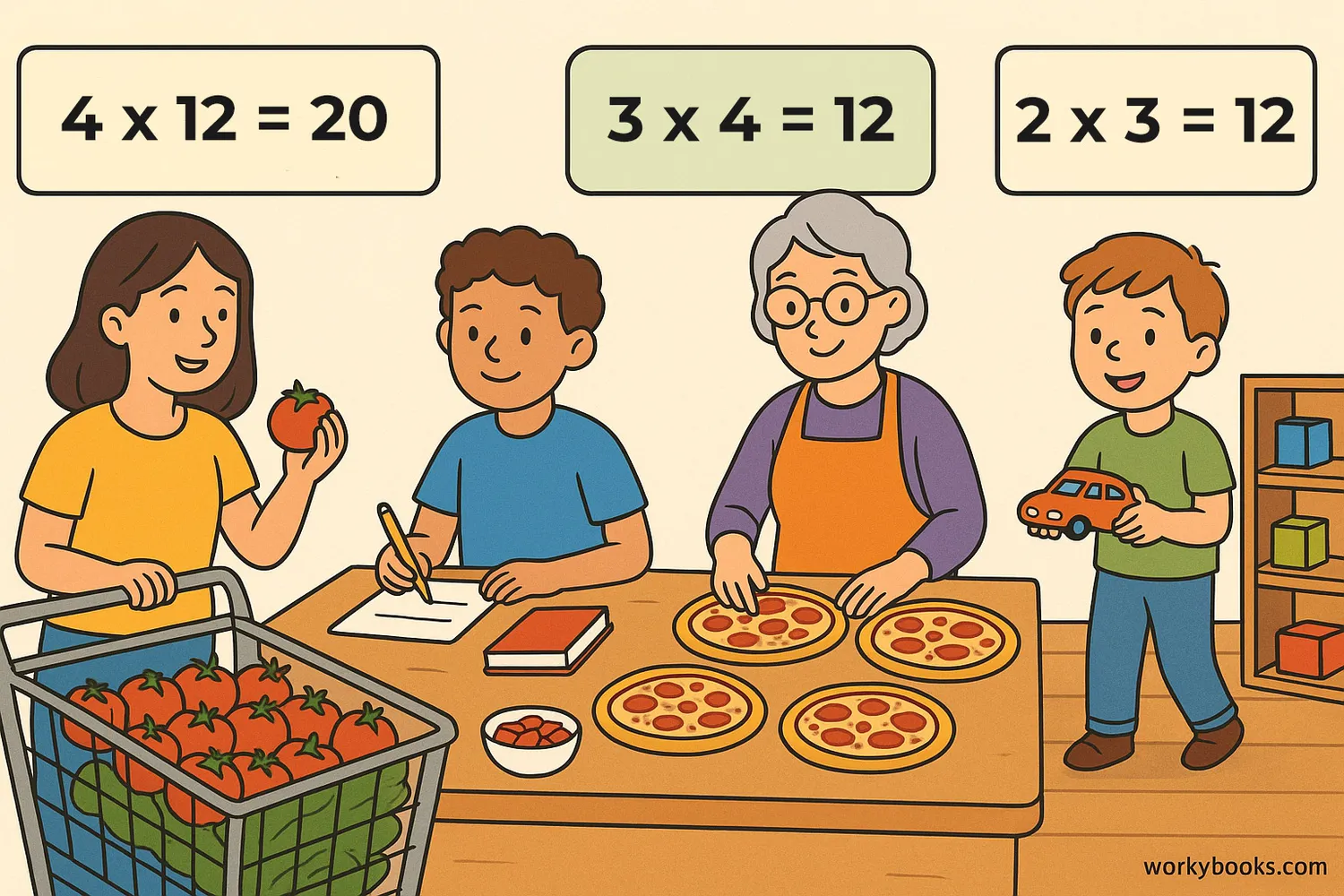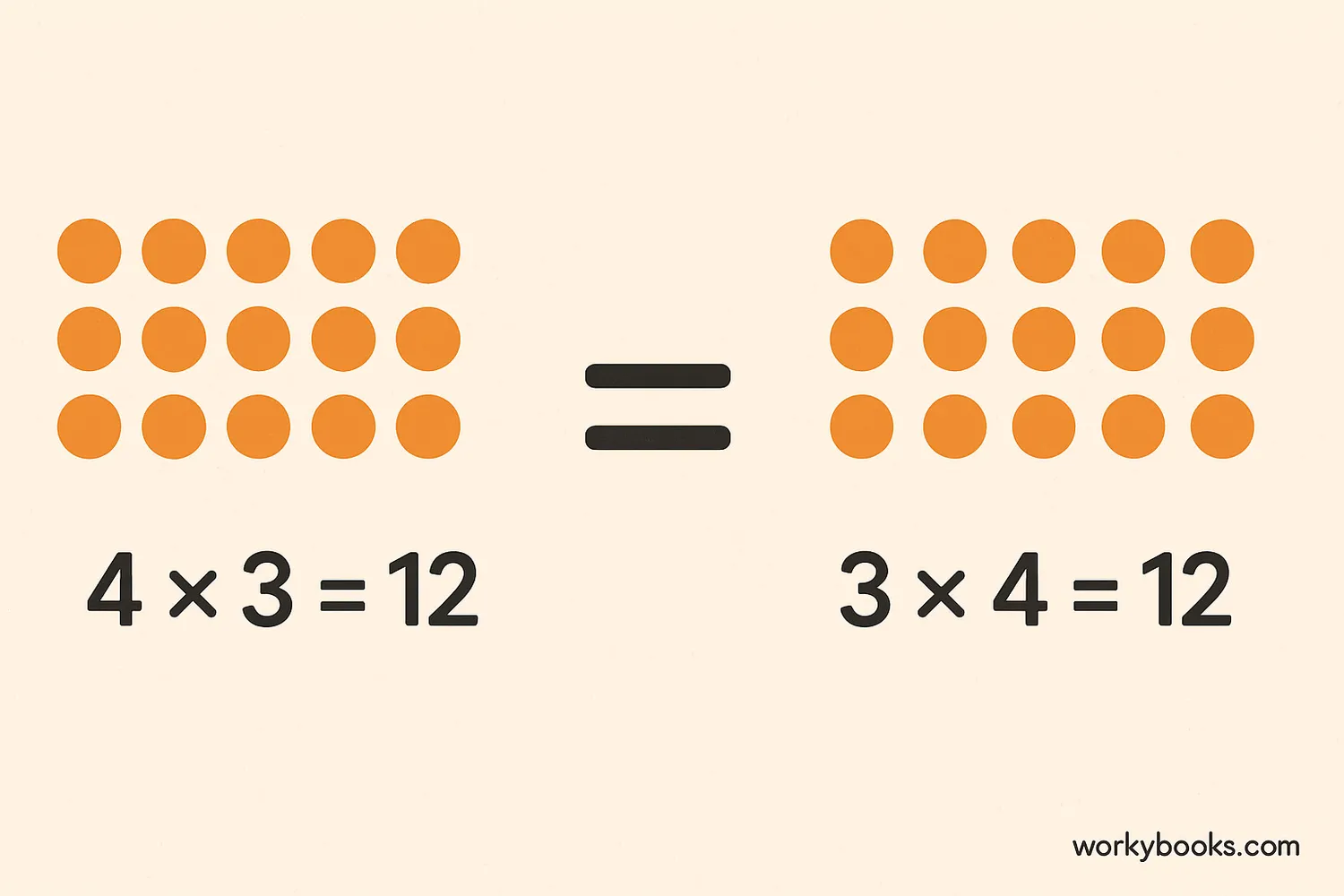Multiplier - Definition, Examples, Quiz, FAQ, Trivia
Discover how numbers work together in multiplication!
What is a Multiplier?

A multiplier is the number that tells us how many times we are adding a number to itself. In multiplication, the multiplier is the number that multiplies another number (called the multiplicand).
For example, in 5 × 3 = 15, the number 5 is the multiplier. It tells us that we are adding the number 3 to itself 5 times (3 + 3 + 3 + 3 + 3 = 15).
Math Fact!
The multiplier always comes first in a multiplication problem, but you can swap the numbers and still get the same answer! This is called the commutative property.
Multiplication Basics

Multiplication is one of the four basic operations in arithmetic, along with addition, subtraction, and division. It's a way to quickly add the same number multiple times.
Multiplier
The number of groups or the number of times we're adding
Multiplicand
The number being multiplied or the size of each group
Product
The result of the multiplication
When we write a multiplication problem, it usually looks like this: multiplier × multiplicand = product. The "×" symbol is called the multiplication sign.
Examples of Multipliers

Let's look at some examples to understand how multipliers work in different situations:
Example 1
If you have 4 bags with 5 apples in each, how many apples do you have?
Example 2
If a car has 4 wheels, how many wheels do 6 cars have?
Example 3
If you read 3 books each month, how many books will you read in 7 months?
In each example, the multiplier tells us how many groups we have or how many times something happens. The multiplicand tells us how many are in each group or how much each time.
Properties of Multiplication

Multiplication has several important properties that help us solve problems more easily:
Commutative Property
You can swap the multiplier and multiplicand and get the same product.
Identity Property
Any number multiplied by 1 stays the same.
Zero Property
Any number multiplied by 0 equals 0.
These properties help make multiplication easier to work with. For example, if you know that 8 × 7 = 56, then you also know that 7 × 8 = 56 because of the commutative property.
Multiplication Quiz
Test your multiplication knowledge with this quiz! Answer all 5 questions to see how much you've learned.
Frequently Asked Questions
Here are answers to some common questions about multipliers and multiplication:
Math Trivia
Discover some amazing facts about multiplication and numbers!
Ancient Multiplication
The earliest known use of multiplication dates back to the ancient Egyptians around 2000 BC. They used a method called "doubling" to multiply numbers, which is similar to how computers multiply numbers today!
Zero's Special Property
Any number multiplied by zero equals zero. This is called the zero property of multiplication. It doesn't matter how big the number is—even a million times zero is zero!
Multiplication Tables
The oldest known multiplication tables are from ancient China around 305 BC, carved on bamboo strips. Learning multiplication tables helps build number sense and makes math much easier!
Really Big Numbers
The largest number with a name is called a "googolplex." It's 1 followed by a googol zeros (a googol is 1 followed by 100 zeros). You couldn't write out a googolplex even if you used every particle in the universe!





